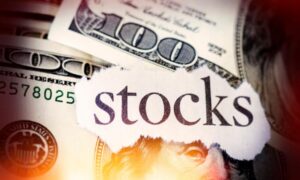How the U.S. Consumer Sector Shaped the Market in 2024

The U.S. consumer sector, the lifeblood of the American economy, demonstrated its resilience and adaptability in 2024. Spanning diverse industries such as retail, e-commerce, food and beverage, and consumer technology, the sector has been a bellwether for market trends. This year, it not only reflected but also shaped the broader financial markets, navigating shifting consumer behaviors, macroeconomic pressures, and technological transformations.
1. The Power of the Consumer Dollar
In 2024, consumer spending remained robust despite economic headwinds such as lingering inflation and higher interest rates. Retail sales showed consistent growth, supported by a strong labor market and rising wages. Analysts noted a “revenge spending” phenomenon, as consumers prioritized travel, dining, and experiences post-pandemic. Companies like Amazon and Walmart thrived on strong e-commerce and omnichannel strategies, while experiential brands such as Airbnb and Live Nation experienced record revenues, demonstrating the shift toward service-oriented spending.
2. Tech Integration Revolutionized Retail
The integration of technology into retail hit a new high in 2024. Artificial intelligence (AI) became a critical tool for enhancing the consumer experience. Personalized recommendations, AI-driven inventory management, and seamless checkout systems powered by AI reshaped retail operations. Big-box retailers and startups alike used data analytics to understand consumer preferences, driving both loyalty and revenue. The application of generative AI in marketing campaigns allowed brands to engage audiences in innovative ways, creating a competitive edge.
3. Sustainability Became a Game-Changer
Sustainability moved from being a buzzword to a business imperative. Eco-conscious consumers demanded greater transparency and accountability, pushing companies to adopt greener practices. Retailers like Target and Nike unveiled ambitious plans for carbon neutrality and circular fashion lines. Meanwhile, plant-based and sustainable food brands such as Beyond Meat and Impossible Foods gained traction, driven by consumers seeking healthier and environmentally friendly options.
4. Inflation and Its Ripple Effects
While US & CAD inflation moderated compared to previous years, its impact was still felt across the consumer sector. Brands had to balance price hikes with maintaining affordability. This challenge spurred a focus on private labels, as consumers increasingly turned to store brands for value. Dollar stores and discount retailers like Dollar General and TJ Maxx saw increased foot traffic, highlighting a growing demand for budget-friendly options.
5. Stock Market Performance
Consumer sector stocks played a pivotal role in driving the S&P 500’s performance in 2024. Giants such as Procter & Gamble, Coca-Cola, and Home Depot delivered strong earnings, bolstered by resilient demand. E-commerce players saw significant gains as digital-first strategies matured. At the same time, IPOs from emerging direct-to-consumer brands created new opportunities for investors to tap into the sector’s growth.
6. Outlook for 2025
The trends of 2024 suggest a promising yet challenging road ahead. With evolving consumer priorities, digital innovation, and heightened focus on sustainability, the U.S. consumer sector is poised for continued transformation. As companies adapt to meet these expectations, the sector will likely remain a key driver of economic and market momentum.
Final Take
The U.S. consumer sector in 2024 exemplified resilience, innovation, and adaptability. It not only reflected the changing dynamics of the American economy but actively shaped the stock market’s trajectory. As we move forward, the sector’s performance will remain crucial in understanding and predicting broader market trends. Investors and analysts would do well to keep a close watch on this powerhouse of economic activity.
Grab Your FREE Report on Top 5 Stocks to Buy in 2024
Disclaimer:The information provided on this website is for read-only purposes and is intended to give an idea for investment to whomever reads it. It should not be considered as financial advice or a recommendation to invest. Due diligence is not a luxury, it is a basic need.














